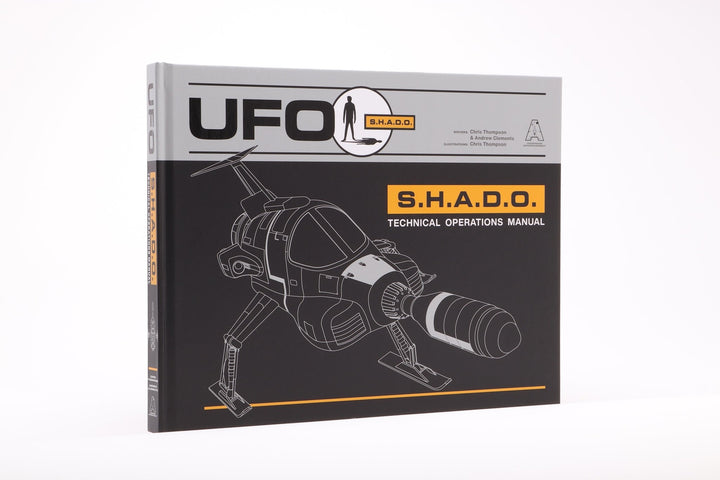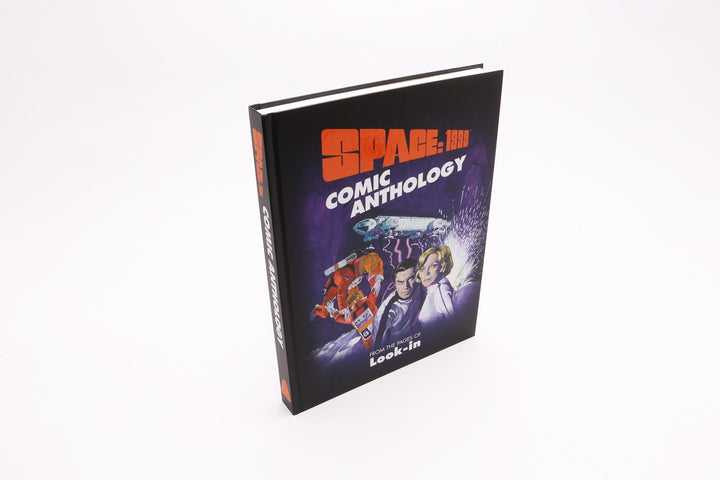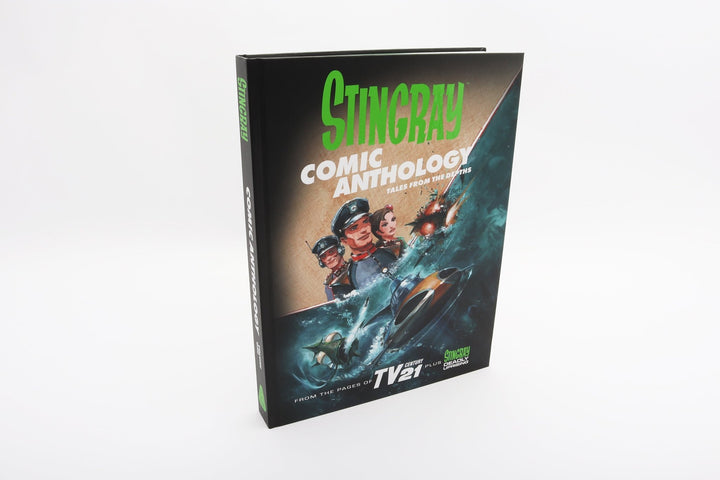Thunderbirds Thursday: Why Did the Series Use Duplicate Filming Models?

One of Thunderbirds' most defining and celebrated aspects is its ground-breaking model work. The series' miniatures and models were the result of a dedicated special effects team who rapidly set a breath-takingly high standard of practical special effects in science fiction television. The perfectly designed and brilliantly filmed model work of Thunderbirds remains a joy to experience. The vehicles seen throughout the series are designed with a strong futuristic slant, yet they take enough inspiration from real-world vehicle engineering and space development to remain credible in appearance and functionality.
However, when watching any given episode of Thunderbirds, have you ever caught yourself thinking that the Thunderbird models seem to change in appearance mid-scene? That Thunderbird 1 may appear a certain colour when dashing to the danger zone, only to adjust its appearance in colour or markings when landing? This Thunderbirds Thursday, we're examining why Thunderbirds' used different styled models throughout the series!
Small, Medium & Large Duplicates

You'd be entirely correct if you've ever wondered that Thunderbird models do indeed change appearances during episodes. For the making of the series, each Thunderbird craft had various duplicates produced for different filming requirements. Small, medium and larger models of the Thunderbird machines were built to suit the needs of the sense of scale for any given sequence. For longshots in which a Thunderbird machine may be flying to the danger zone, but filmed from a far away distance, smaller models of the Thunderbird craft would be utilised, whilst larger models would be produced for any close-up shots needed. This is a standard enough practice in special effects filmmaking, and had been utilised by A.P. Films themselves since the earlier days of Supercar.
Medium-scaled models would be used for creating the classic launch sequences of each Thunderbird, whilst other varyingly scaled models would be required if certain scenes demanded that we see two or three Thunderbird vehicles in the same shot. However, for close-up shots, only certain sections of the vehicle would need to be produced. For example, if a sequence in a script calls for a shot of a particular Thunderbird's engines roaring into life, only that rear section of a Thunderbird would need to be created. Again, a common enough manner in which models are utilised in film and television.
However, with Thunderbirds, the disparity between different models of the same craft is oddly noticeable, more so than other Gerry Anderson series. Even when watching scenes involving Thunderbird models which appear to be similar in scale, you may notice more of those subtle differences mentioned earlier. Why this odd lack of consistency between these models?

Scale of Production
The immense scale of Thunderbirds' production throughout 1965 saw all areas of A.P. Films working in overdrive. Special effects director Derek Meddings had continually pushed what the company could achieve, each preceding series improving on what had come before, and had reached something of a peak with 1964's Stingray. The growingly sophisticated techniques involved in Supermarionation (also enabled by Lew Grade's financial backing) meant that with Stingray, duplicates of the series' puppets were being produced to allow filming of episodes simultaneously. By the time Thunderbirds came along, it was decided that there should also be multiple special effects stages for the same purposes. Meddings led Thunderbirds' primary special effects unit, whilst a second unit was established under the leadership of Brian Johnson (credited as Johncock). Not only that, a third special effects stage was set up exclusively for the filming of aerial sequences, of which Thunderbirds had in abundance compared to past series.

Let's just take stock of how large Thunderbirds' making was at this point - three entire stages devoted exclusively to producing the series' electrifying special effects, all of which required a vast variety of differently scaled Thunderbird models, which all surely had to be duplicated for each stage. This would all balloon further in January 1966 when Thunderbirds' success resulted in the greenlighting of Thunderbirds Are Go and a second series of six episodes, all of which prompted the expansion of A.P. Films to include new company buildings which would expand the individual departments.
The knock-on effect of this gargantuan scale of operations then is that with so many varying models of the International Rescue craft flying around between different special effects units, there's a noticeable lack of consistency in how the Thunderbirds appear on-screen. Positioning of craft markings, entire fonts, colour palettes and the characteristic 'dirtied down' aesthetic of each Thunderbird machine varies from model to model. The large front section of Thunderbird 2 which appears in 'The Perils of Penelope' when Thunderbird 2 and FAB 1 rendezvous outside of the Anderbad Tunnel is a noticeable example. The text of Thunderbird 2 itself which runs along the side of the craft's front nose section is jarringly large in that thick, bold text, accompanied by that unmissable, abnormally large number '2'! Nevertheless, the shot achieves what it needs to by endowing an immediate sense of scale to the viewer by having FAB 1 roll up to the craft.


Another example includes the launch model of Thunderbird 3, which carries a distinct black-coloured '3' insignia down its middle, only for it to regularly vanish by the time Thunderbird 3 itself has rocketed into deep space. Other common scenarios include freshly filmed footage of Thunderbird machines that wouldn't entirely match with pre-recorded stock footage of Thunderbirds in flight, as well as the front grill section of FAB 1 only ever needing to be built for action sequences in which the Rolls Royce would deploy any number of its deadly gadgets.
Compared to the previous puppet series, the earliest days of Thunderbirds' filming were compounded even further by the sudden expansion of episodes from half-hours into 50-minutes. With all of this in mind, there likely wasn't much opportunity for too much close cross-inspection of each department's varying takes on the same Thunderbird model. There also would have been little sense to pause production once it was underway to abruptly ensure that every single model of every single Thunderbird matched with the other. From the audience's point of view, there likewise would surely have been little need for concern. Thunderbirds' black-and-white debut at a time before home media releases allows us to pause and analyse every shot with a microscopic lens would surely have obscured these details from view.
Visual Imperfections?
It's safe to say that these visual imperfections haven't dampened Thunderbirds' lasting reputation for spectacularly cinematic special effects. As we've explored, the eye-catching nature of how separate one model may look from the other offers a fascinating insight into just how Thunderbirds was made. Beyond the minor visual blemishes, there was clearly a hugely focused attitude from all individuals working under Meddings in bringing the Thunderbird machines to life and making them appear as unified onscreen as possible.

Do you find the varying depictions of Thunderbird models distracting? Or does it add to the series' appeal? What are your favourite examples of Thunderbird models appearing different onscreen? Let us know in the comments below or on our social media channels!




![Thunderbirds Comic Anthology Volume One [HARDCOVER] - The Gerry Anderson Store](http://gerryanderson.com/cdn/shop/files/thunderbirds-comic-anthology-volume-one-hardcover-8030771.jpg?v=1751089031&width=720)
![All Sections Alpha: The Making of Space: 1999 [HARDCOVER] - The Gerry Anderson Store](http://gerryanderson.com/cdn/shop/files/all-sections-alpha-the-making-of-space-1999-hardcover-7498116.png?v=1757766647&width=720)

![Stingray Comic Anthology Volume Two – Battle Lines [HARDCOVER] - The Gerry Anderson Store](http://gerryanderson.com/cdn/shop/files/stingray-comic-anthology-volume-two-battle-lines-hardcover-107681.jpg?v=1738856151&width=720)
![Stingray W.A.S.P. Technical Operations Manual Standard Edition [HARDCOVER] - The Gerry Anderson Store](http://gerryanderson.com/cdn/shop/files/stingray-wasp-technical-operations-manual-standard-edition-hardcover-112278.jpg?v=1749664163&width=720)
![Stingray WASP Technical Operations Manual Special Limited Edition [HARDCOVER BOOK] - The Gerry Anderson Store](http://gerryanderson.com/cdn/shop/files/stingray-wasp-technical-operations-manual-special-limited-edition-hardcover-book-991914.jpg?v=1749657538&width=720)
![Stingray: The Titanican Stratagem – Signed Limited Edition [HARDCOVER NOVEL] - The Gerry Anderson Store](http://gerryanderson.com/cdn/shop/files/stingray-the-titanican-stratagem-signed-limited-edition-hardcover-novel-129251.jpg?v=1740558711&width=720)







